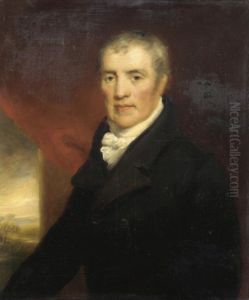John Farey Paintings
John Farey Sr. was an influential British geologist, writer, and engineer, best known for his work in the field of geology and for his contributions to the early understanding of stratigraphy in England. Farey was born in 1766 in Woburn, Bedfordshire, England. He was not primarily known as an artist in the traditional sense of painters or sculptors, but rather for his scientific illustrations and diagrams that have artistic merit due to their precision and detail.
Farey's most significant work in geology was his contribution to the 'Encyclopedia Britannica', for which he wrote numerous articles on geology, mathematics, and technical subjects. His writings were characterized by detailed observations and a systematic approach to the classification of rocks, which helped lay the groundwork for modern geological methods. He is perhaps most famous for his systematic description of the rock strata of England, which was one of the earliest attempts to create a detailed geological survey of a region.
In addition to his geological work, Farey was also known for his study of the mathematics of music and the properties of what is now known as the Farey sequence in number theory, which has applications in various fields of mathematics and science. This sequence is named after him, although he did not discover it but rather gave a detailed description of its properties.
John Farey Sr. passed away in 1826. While he may not be remembered as an artist in the conventional sense, his illustrations and diagrams in his scientific works are appreciated for their clarity and effectiveness in conveying complex geological concepts. His legacy in the field of geology and his interdisciplinary approach to science and art continue to be recognized by both scientists and historians.
